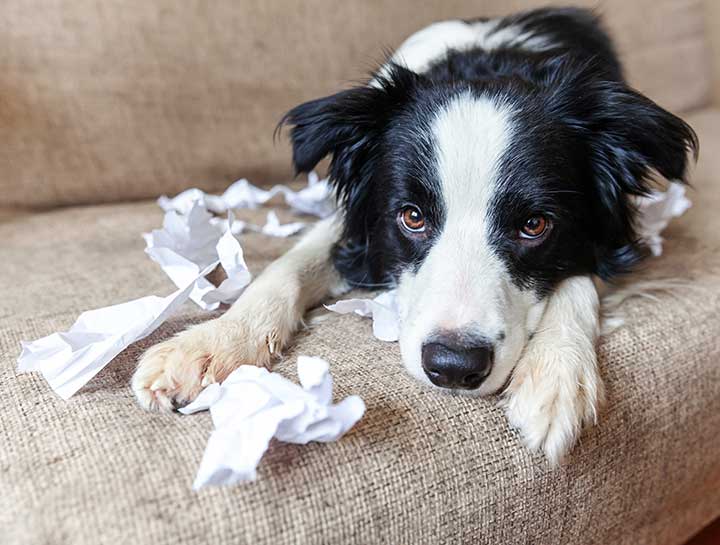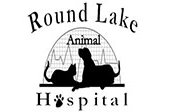Tips for Pet-Proofing Your Home

Could hazards in your home injure or sicken your pet? Unfortunately, the very things that make your house or apartment comfortable for you could pose dangers to your dog, cat, bird, or small animal. Although it may not be possible to prevent all accidents, following these pet-proofing tips will reduce your pet’s risk of injury.
Cover Electrical Cords
A teething puppy or a curious rabbit, cat, or small animal could end up with a life-threatening shock after gnawing on a plugged-in electrical cord. For safety’s sake, place cords in chew-proof covers or protectors. Homemade cord protectors can be made by splitting a length of hose or PVC pipe and placing cords inside. Pet supply companies also sell ready-made cord protectors in a variety of sizes and colors.
Put Breakable or Easily Damaged Items Out of Reach
Your favorite vase or souvenir may not survive if your pet knocks it over, bats it around, or chews on it. Finding secure places for your cherished possessions not only prevents mishaps but also protects your pet. Sharp glass fragments could cut your dog or cat’s paws, while spilled perfume or other liquids might contain harmful substances that could sicken pets.
Eliminate Temptation
Your pet will be less likely to get hurt or make a mess if you:
- Install safety latches on bathroom and kitchen cabinets
- Use baby gates to keep your pet out of certain areas of your home
- Make sure the lids on your kitchen and bathroom trash can close securely
- Keep toilet lids closed
- Don’t use dissolvable cleaning tablets in toilets (pets can be poisoned by drinking water that contains cleaning products)
- Put cleaning products, laundry detergent, cosmetics, and medication on shelves or cabinets that your pet can’t reach
- Close washer and dryer lids immediately after emptying the machines
- Urge your children to put their toys away after they use them – a very important tip if your pet is a chewer
- Keep kitchen counters clean (your pet could choke on ties, string, and other food packaging materials left on your counter)
You’ll be amazed at how many hazards you’ll find when you view the rooms in your home from your pet’s perspective. In fact, it’s much easier to spot potential hazards when you’re sitting on the floor.
Buy Safe Plants
Your lily plant or the tulip bulbs you’ve been meaning to plant may not seem appetizing to you, but your dog or cat may think they look tasty. Depending on the type of plant consumed, your pet may experience symptoms ranging from diarrhea or an upset stomach to death. If you’re not sure which plants are safe for your pet, check out the ASPCA Animal Poison Control website. You can also call the helpline at (888) 426-4435 if you’re worried that a plant, food, or medication that your pet ate may be poisonous.
Keep These Foods Out of Reach of Your Pets
In 2019, stomach ailments were the top reason that dogs insured by Healthy Paws Pet Insurance visited the veterinarian. Although some visits were due to illnesses, eating something dangerous or toxic was a common reason that pets were rushed to veterinary offices. According to The Humane Society of the United States, foods that could sicken or kill pets include:
- Chocolate
- Onions (in addition to onion powder and onion flakes)
- Garlic
- Raisins
- Grapes
- Potato and tomato stems and leaves
- Coffee grounds and beans
- Alcohol
- Yeast dough
- Foods, beverages, candy, and gum sweetened with xylitol
- Macadamia nuts
- Walnuts
- Apple seeds
- Apricot, cherry, and peach pits
- Avocado
Make Your Home Safe for Your Bird
Birds are particularly susceptible to toxic fumes and injuries. If you have a bird:
- Avoid cooking with Teflon-coated pans or cleaning your oven when your bird is in the house
- Repair holes in screens promptly
- Don’t operate ceiling fans or other equipment with moving parts when your bird is out of its cage
- Don’t light candles (they may contain toxic ingredients)
- Remove your bird before using products that can produce fumes, like paint and strong cleaners
Unfortunately, accidents can still happen no matter how diligently you pet-proof your home. Give us a call immediately if your pet is injured or has eaten a potentially toxic food or substance.
Sources:
Healthy Paws Pet Insurance and Foundation: Top 10 Conditions in Dogs
The Humane Society of the United States: Foods That Can Be Poisonous to Pets
